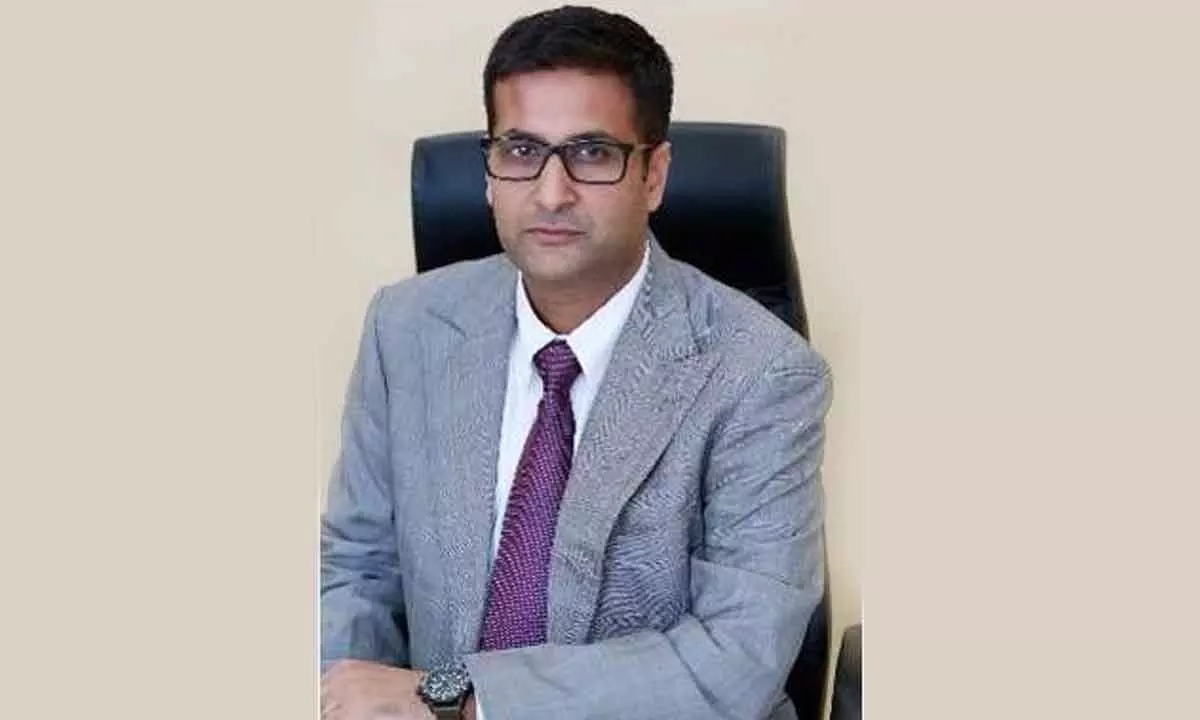India poised to become 6th largest insurance market: TATA AIG General Insurance CEO
Says there is a need to design products and processes for the majority of genuine insureds, rather than focusing on the remaining minority with fraudulent intent
image for illustrative purpose

The health insurance segment, the largest in the industry, saw increased awareness during the pandemic, but challenges persist, with two-thirds of individuals still self-insured in health and a significant portion of vehicles uninsured. Fresh thinking and human capital are identified as essential for further growth
India is poised to become the sixth largest insurance market. Neelesh Garg, MD & CEO, TATA AIG General Insurance, in his address at an event mentioned that trust is pivotal in realizing the vision of insurance for all by 2047, with India poised to become the sixth largest insurance market. Despite a 14 per cent Compounded Annual Growth Rate (CAGR) in the last decade, the goal is to aim for 20 per cent growth, especially after the heightened awareness brought about by the Covid-19 pandemic.
The health insurance segment, the largest in the industry, saw increased awareness during the pandemic, but challenges persist, with two-thirds of individuals still self-insured in health and a significant portion of vehicles uninsured. Fresh thinking and human capital are identified as essential for further growth. Garg emphasised the impact of privatisation that happened since 2001.
The changing product landscape over the past two decades calls for connecting data ecosystems, such as Vahan, to enhance convenience. India experiences frequent catastrophes, highlighting the need for home insurance, which faces challenges on both the supply and demand sides. Bridging the gap in understanding insurance products among average customers is crucial, with initiatives like Bima Vistar, Bima Vahak and Bima Sugam for increased transparency.
Addressing claims with the right balance between empathy and efficiency is emphasized, requiring strong data analytics to identify fraud. The distribution side, particularly in reaching over 6,000 villages, is deemed critical, with the concept of Bima Vahak introduced for village-level insurance. Garg stressed designing products and processes for the majority of genuine insured rather than concentrating on the remaining minority with mala fide intentions.
The role of technology is highlighted in making insurance affordable, reducing costs, and increasing distribution. Automation is proposed to streamline processes and reduce inefficiencies. The future of insurance is seen as increasingly technological, with a shift towards pay-as-you-consume models. The rising digital presence is expected to increase the demand for cyber liability coverage.
Despite the growth, only 10 per cent of catastrophic losses are covered by insurance in India compared to developed countries with 80-90 per cent coverage. The call to embrace technology, expand distribution, and innovate products is underscored as essential for achieving the vision of comprehensive insurance coverage in India by 2047.
The flagship event of the National Insurance Academy, Insurance Summit, 2023 was organized on October 03 in Mumbai. The theme of the summit was “Reimagining Insurance Business: Insurance for all by 2047”.
Dr Tarun Agarwal, Director, NIA said in his opening remarks, that the current era is marked by economic changes, risks, and challenges, underscoring the essential need for insurance coverage.
The Insurance Regulatory and Development Authority of India (IRDAI) envisions a comprehensive insurance framework for all citizens by 2047. This includes life, health, and property coverage, with a strategic focus on tailoring products, innovation, and transitioning to a principal-based regulatory system.
Recognizing the pivotal role of data, Dr Agarwal emphasizes the rise in data skills and the importance of customer relationship management for effective customer engagement. He highlighted the need for increased Request for Information (RFI) and user-friendly, tech-driven end-to-end services.
Natural perils such as wind, hailstorms, and floods are not acknowledged enough, stressing the necessity for innovative insurance coverage. Agarwal also underlines the importance of a digital mindset, advocating for the integration of technologies like drones, robotics, and analytics to enhance risk assessment and streamline processes.
BC Patnaik, Member Life, IRDAI, in his keynote address, has given the regulator’s perspective on “Insurance for All by 2047”. In India's insurance landscape, the life insurance sector has covered a substantial 52 crore lives, including the adult population through initiatives like Ayushman Bharat. Despite this, challenges persist, with an average inadequate sum assured in life insurance and a notable mortality protection gap. The potential for a tenfold increase in life insurance looms, promising employment generation of 29-30 lakh, and over 50 lakh if distribution channels are also included.
While the general insurance sector shows upward growth, only 5 per cent property insurance coverage and an overall penetration of 4 per cent indicate a lag in keeping pace with the expanding economy. The booming market, surpassing 5 lakh crore in standalone housing loans, underscores the need for expanding insurance products. Health insurance is on the rise, growing at a rate of 20-22 per cent.
Assets under management face a challenge due to a lack of skilled individuals in marketing and relations. Most life insurance companies have asset values of less than 10,000 crores, posing a significant hurdle. Recognizing these challenges, institutes like NIA are called upon for support to build capability.
It is emphasized that the insurance industry needs to evolve aggressively, aligning itself with the developing economy. A failure to support economic growth can lead to adverse effects.
The regulatory environment, led by IRDAI, is evolving with the liberalisation of the social sector and distribution channels. Insurance density has grown ten times with expectations of further growth. Patnaik stated that the insurance industry is urged to reimagine its approach, adapt technologically, and invest in human capital to navigate the evolving landscape successfully.

